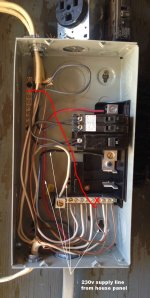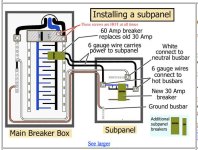Agree with the others.
While yes you could get 230 volts from what you have it is a kludge. What you did before is not even close to code what you are proposing will be even further from code and if something happened (fire) your home owners insurance would most likely void your policy if they could find anyway to blame an electrical issue or if it could be blamed in any way.
Put in a proper subpanel. Even though it is your garage it effects the house wiring load center as well.
Not talking permits (money grabbers) but the code is there for a real good reason.
While yes you could get 230 volts from what you have it is a kludge. What you did before is not even close to code what you are proposing will be even further from code and if something happened (fire) your home owners insurance would most likely void your policy if they could find anyway to blame an electrical issue or if it could be blamed in any way.
Put in a proper subpanel. Even though it is your garage it effects the house wiring load center as well.
Not talking permits (money grabbers) but the code is there for a real good reason.


